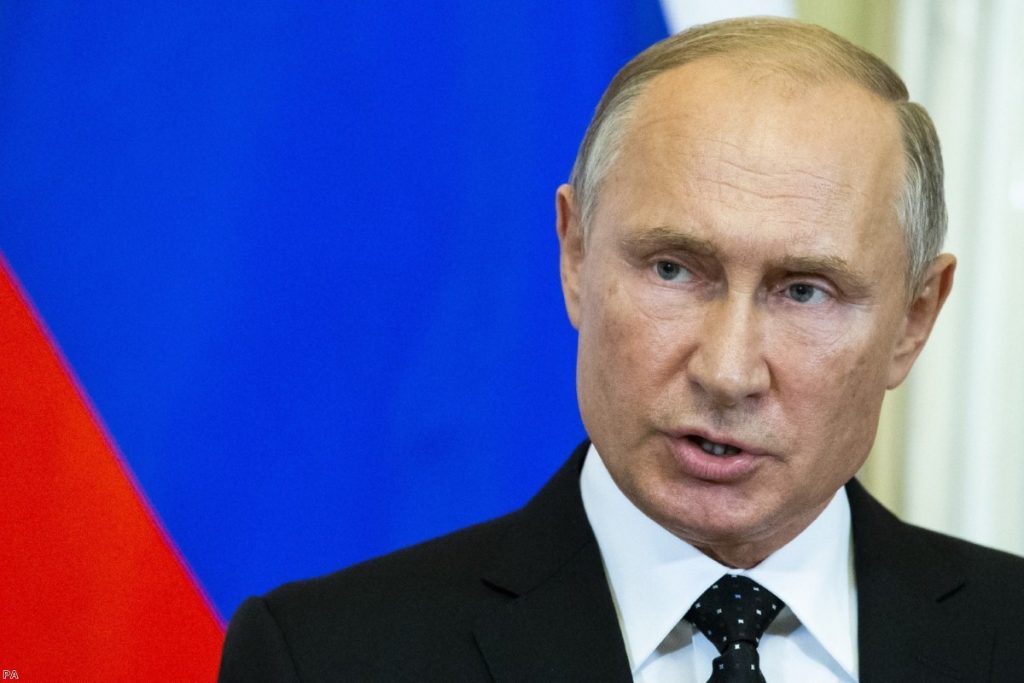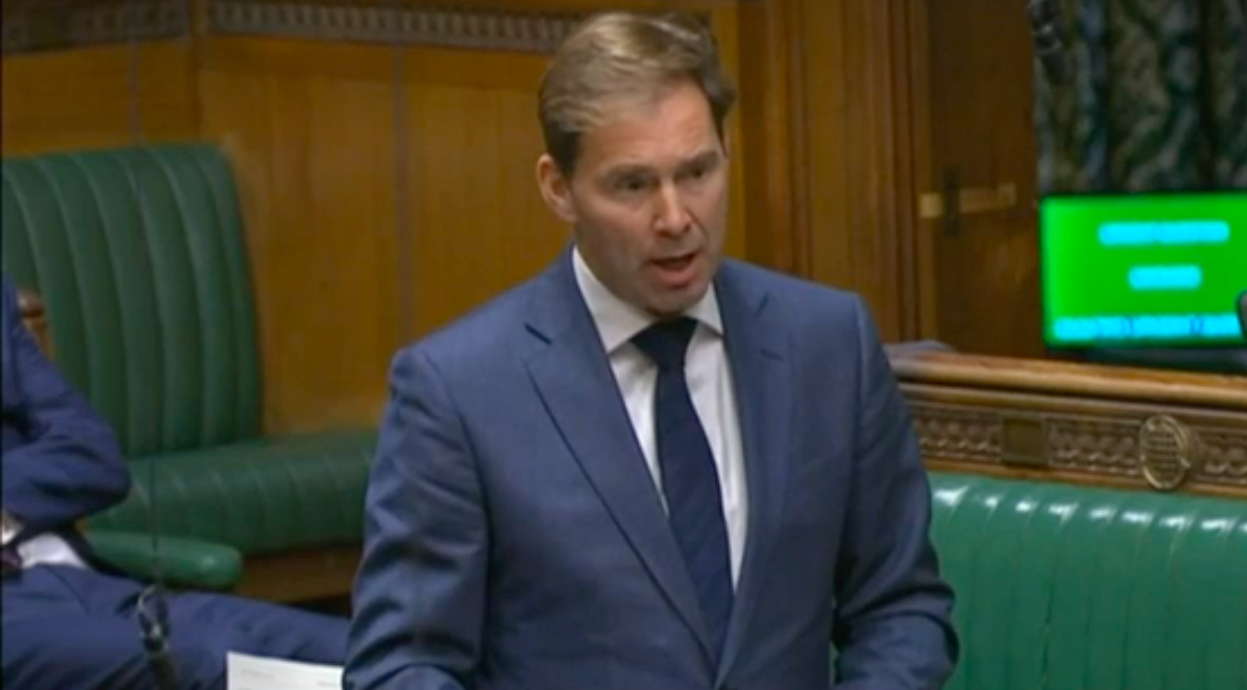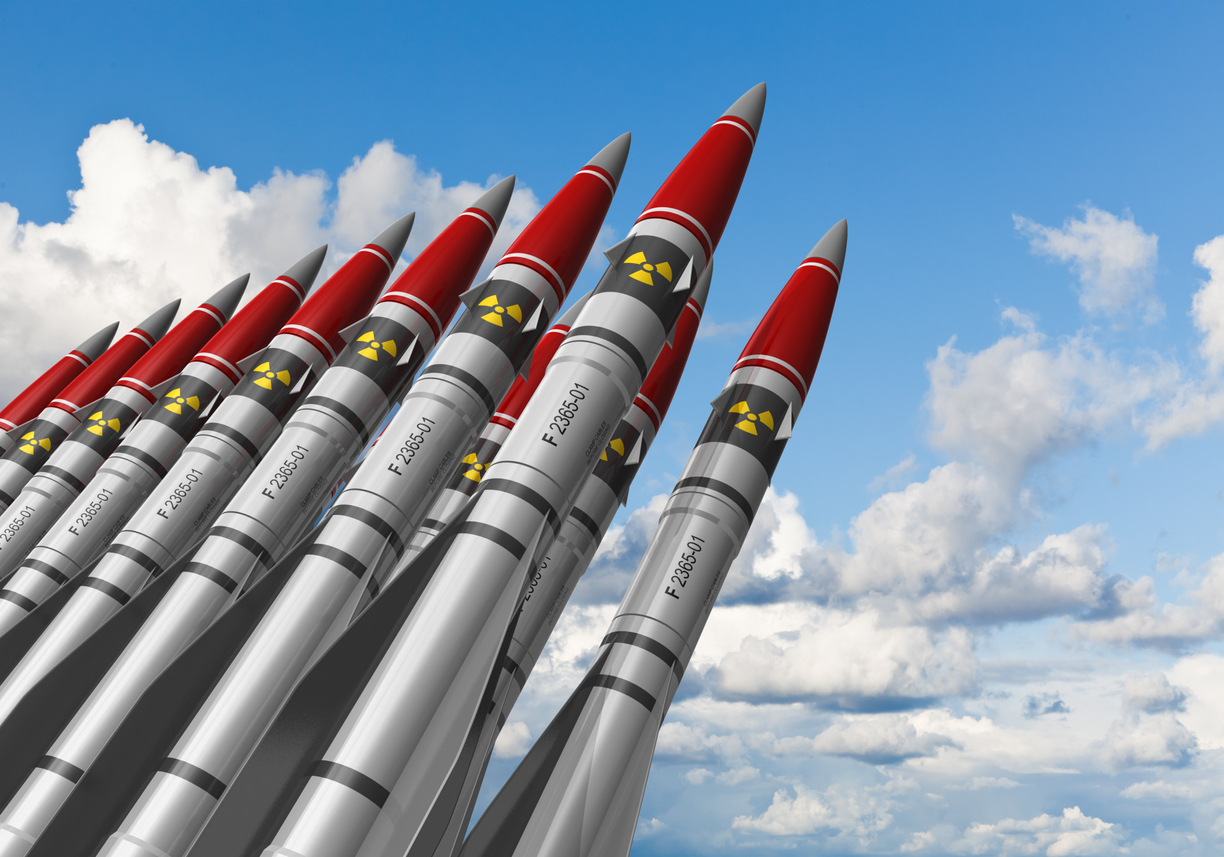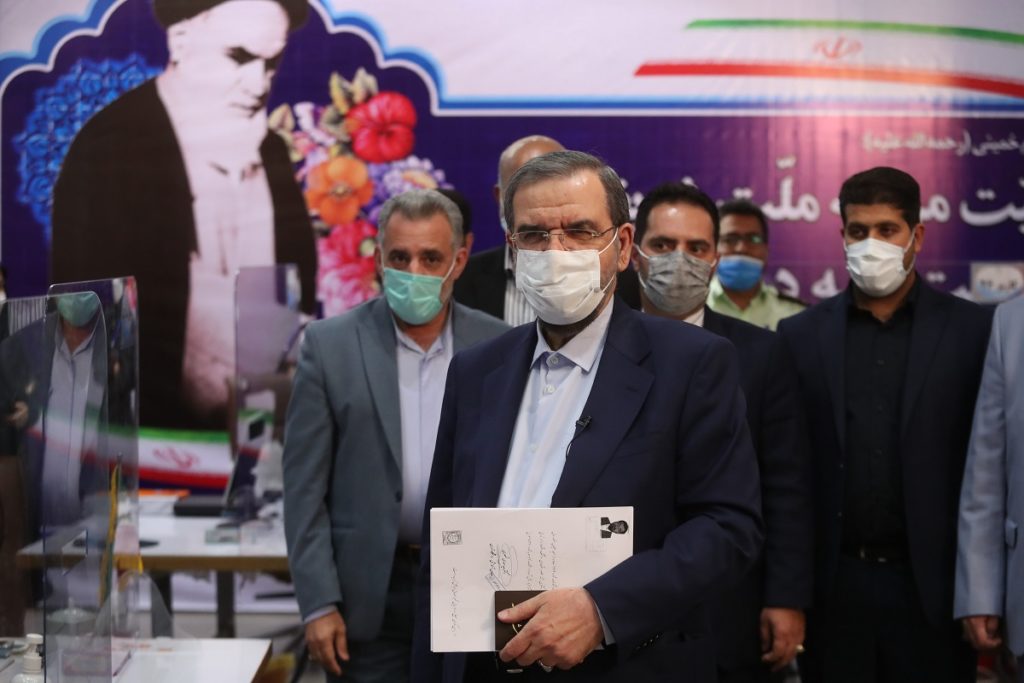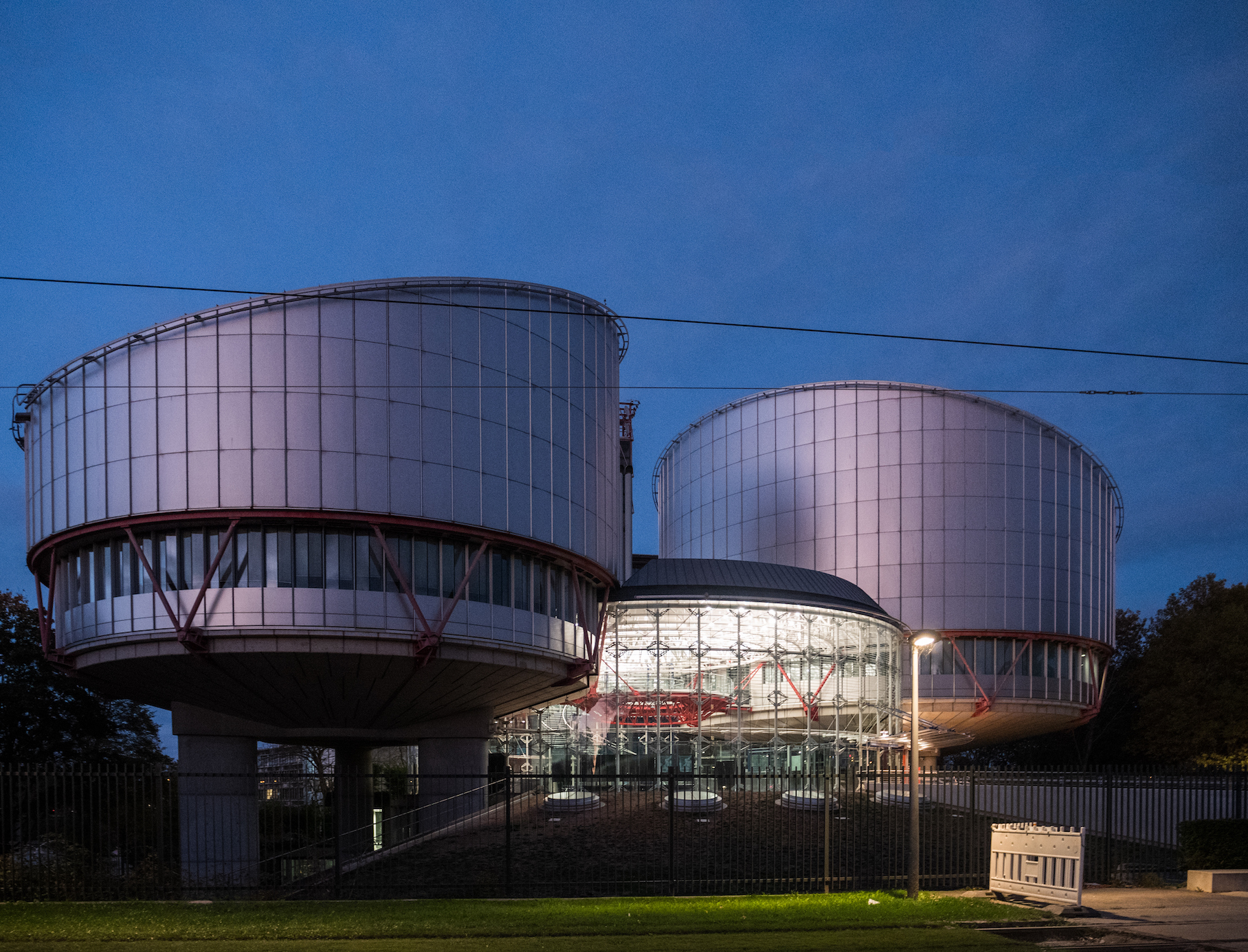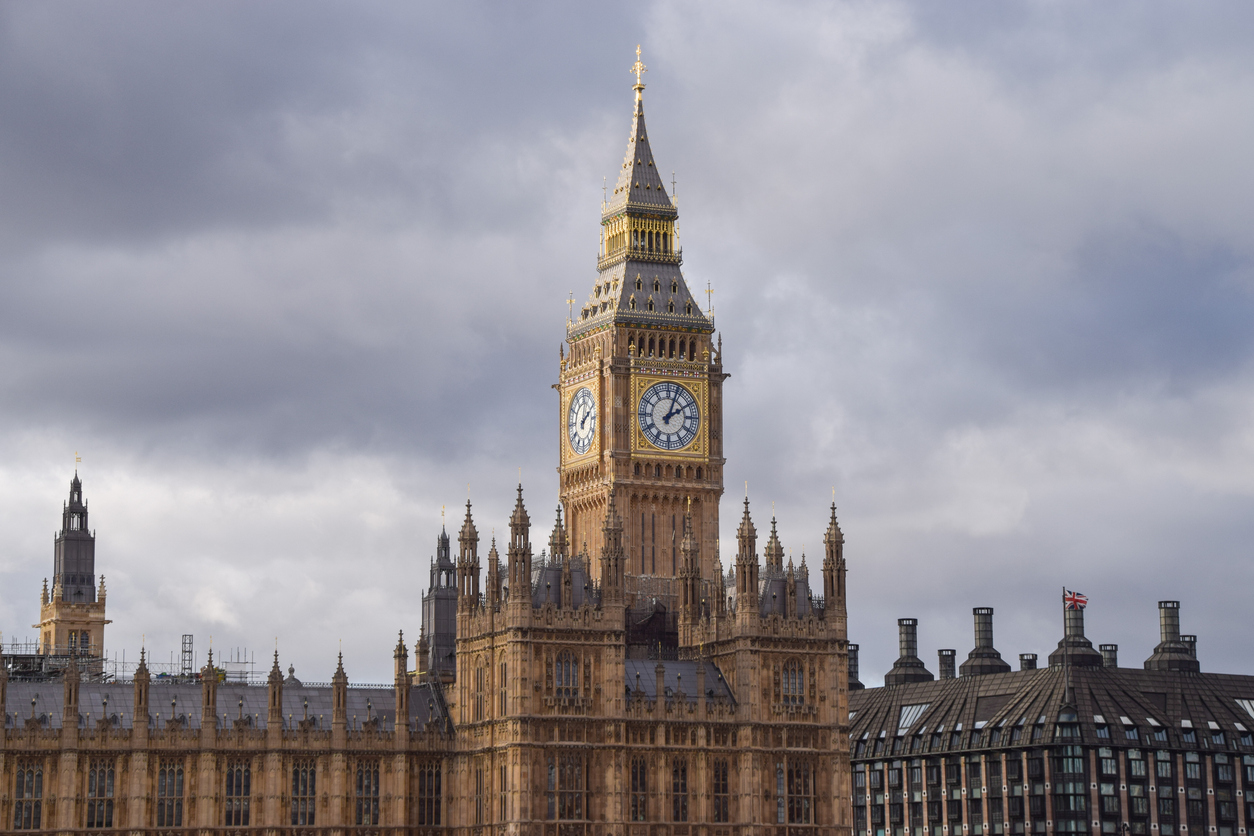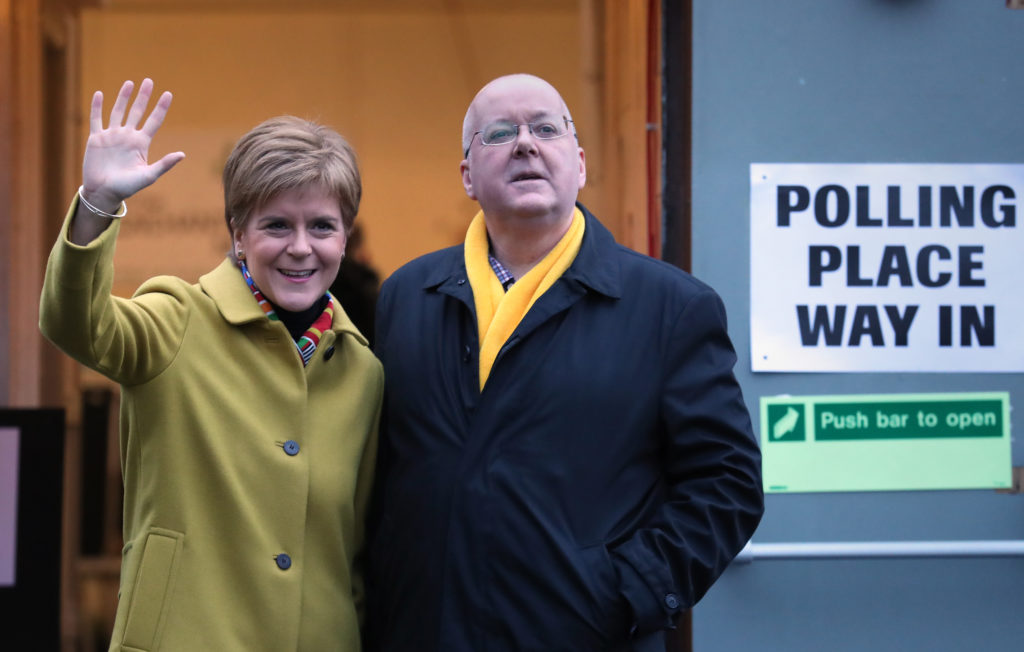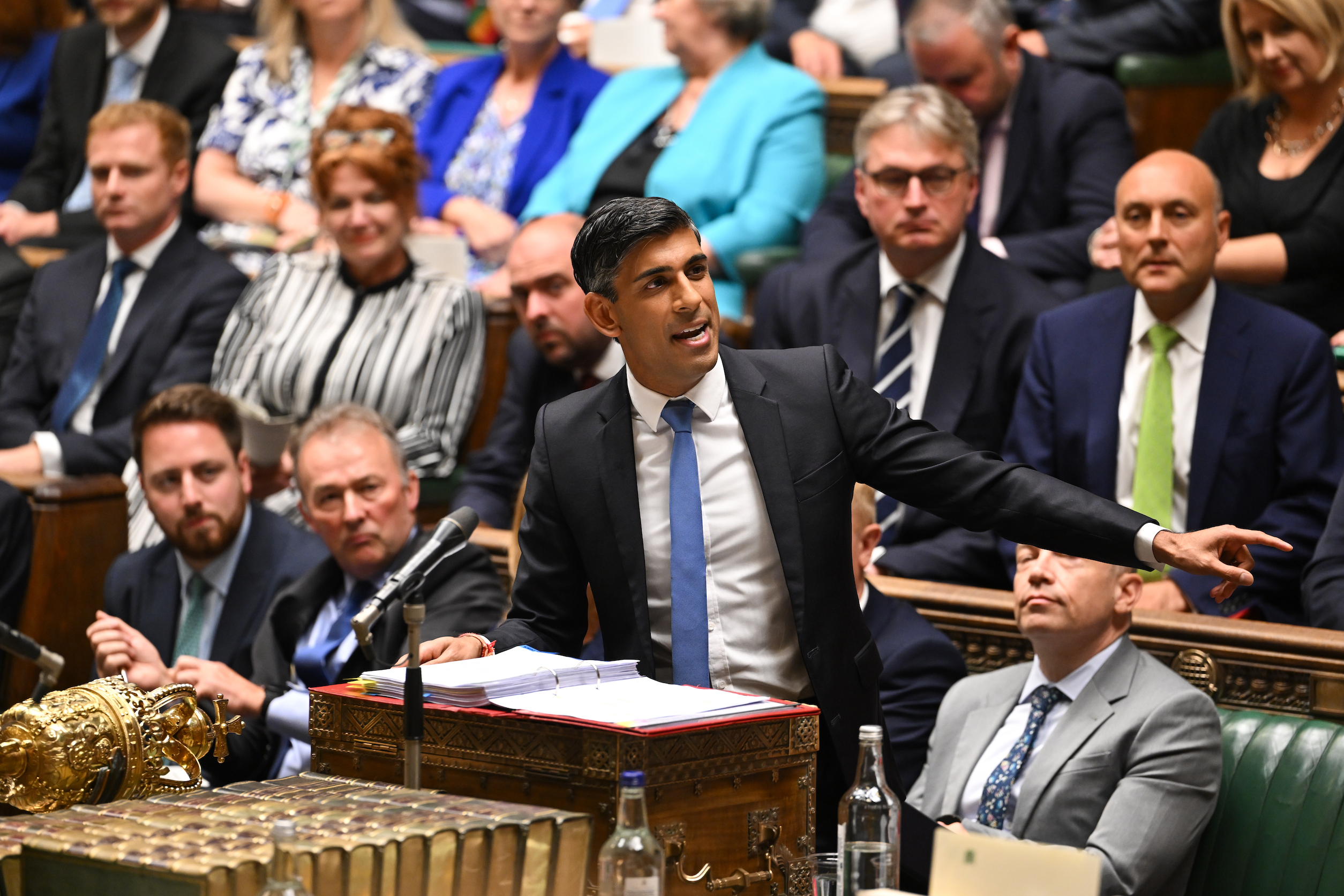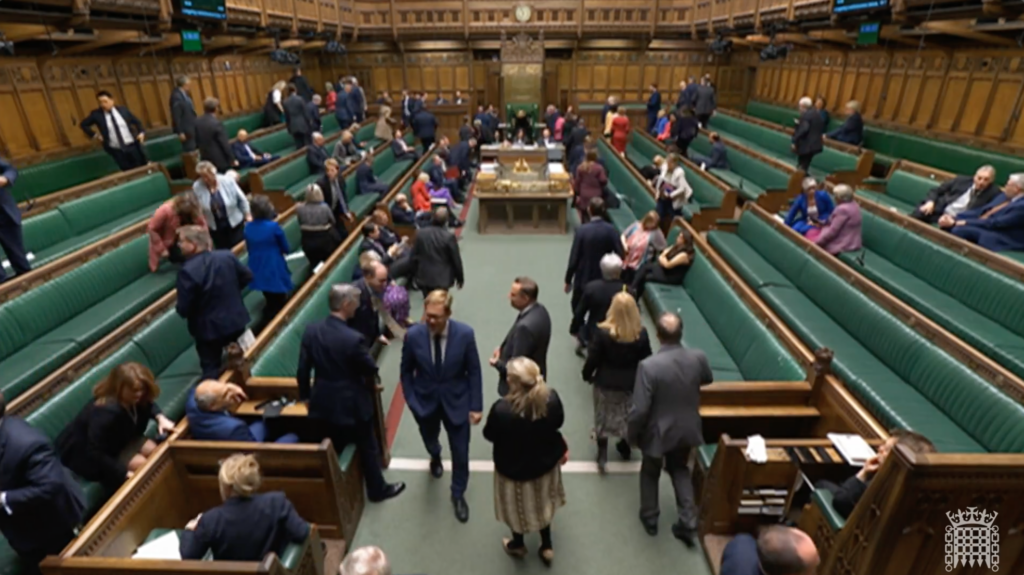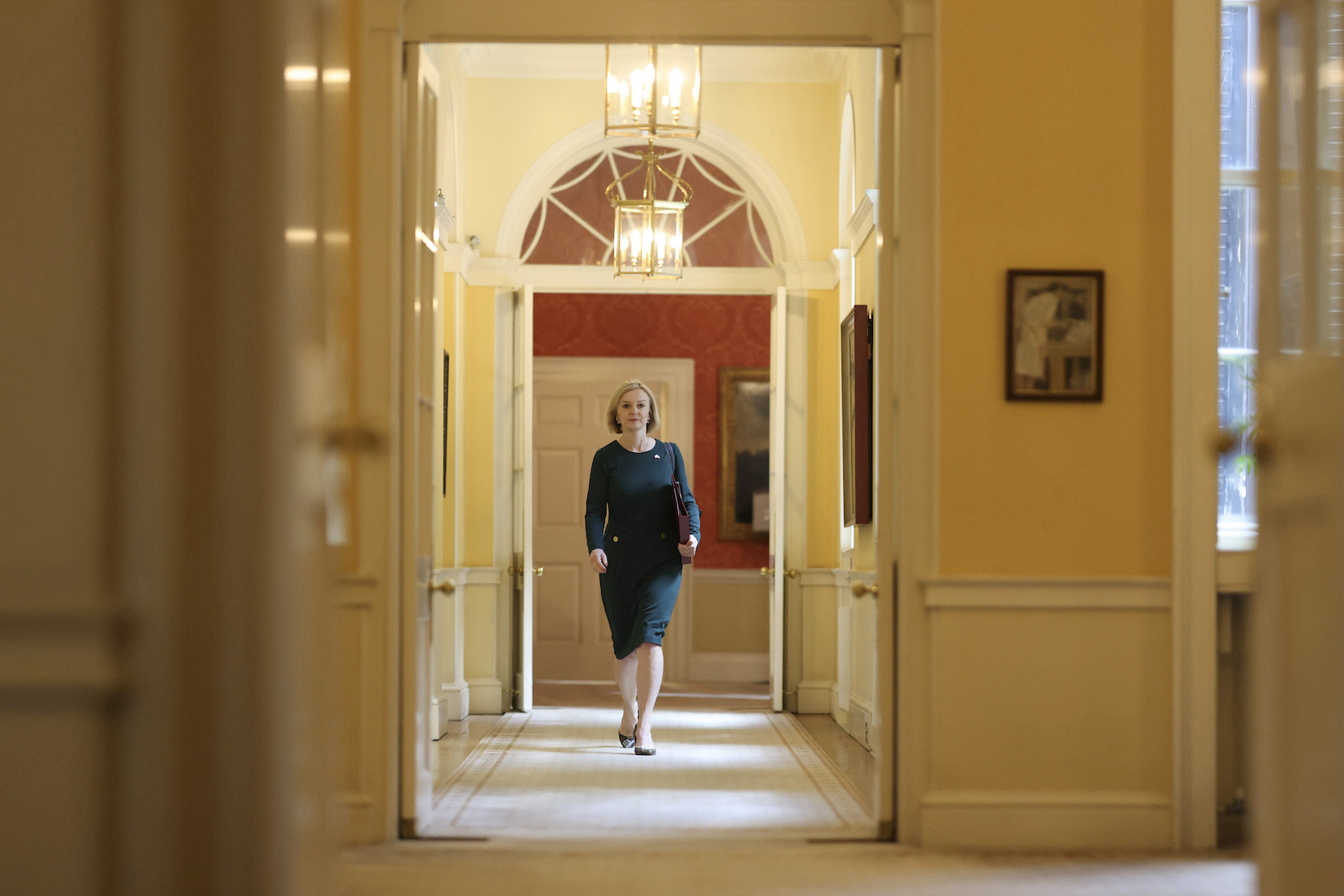What is nuclear deterrence?
The strategic concept of nuclear deterrence aims to prevent war. It is the justification virtually every nuclear state uses for maintaining nuclear arsenals, including the UK.
The concept of nuclear deterrence follows the rationale of the ‘first user’ principle. States reserve the right to use nuclear weapons in self-defence against an armed attack threatening their vital security interests.
Possession of nuclear weapons could be seen as the ultimate bargaining tool in international diplomacy, instantly giving any nuclear state a seat at the top table.
The UK’s strategic nuclear deterrent is provided by submarine-launched ballistic nuclear missiles, under the direct control of the Prime Minister. The policy of Continuous At Sea Deterrence (CASD) has been maintained for over 50 years and is based on the principle that a nuclear submarine is on patrol somewhere in the world at any given time.


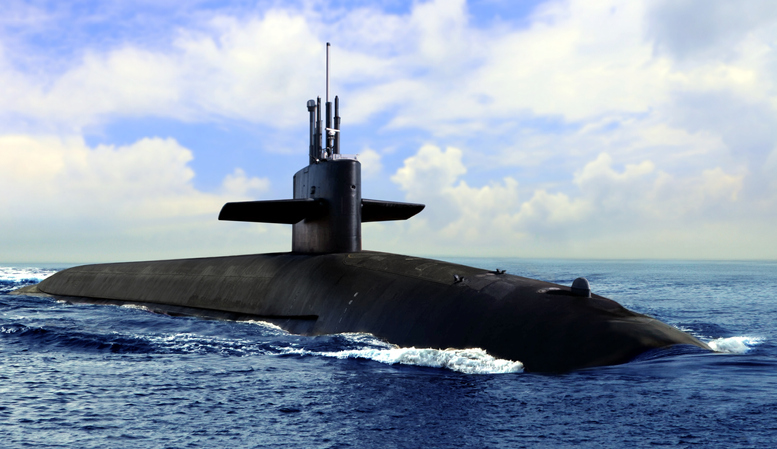
The UK’s nuclear deterrent is submarine based.
Which countries have a nuclear capability
According to the Stockholm International Peace Research Institute, as of 2021, nine countries were said to be classified as a a nuclear armed state. These are as follows, in descending order of nuclear warheads per country:
Russia – 6,375 nuclear warheads
The United States of America – 5,800 nuclear warheads
China – 320 nuclear warheads
France – 290 nuclear warheads
The United Kingdom – 215 nuclear warheads
Pakistan – 160 nuclear warheads
India – 135 nuclear warheads
Israel – 90 nuclear warheads
North Korea (estimate) – 30-40 nuclear warheads
Despite possessing the nuclear bomb, five of these counties (Russia, USA, France, China and the UK) join a further 186 non nuclear weapon States to have signed the 1968 Treaty on the Non-Proliferation of Nuclear Weapons (NPT).
Pakistan, India, and Iran (which has never confirmed nor denied having nuclear arsenals) have never signed the Treaty. Norther Korea withdrew in 2003.
The Non Proliferation Treaty’s listed objectives were to prevent the spread of nuclear weapons and technology, to promote cooperation in the peaceful use of nuclear energy, and to advance the end-goal of nuclear disarmament.
The Treaty is based on an informal agreement between nuclear and non-nuclear states: that non-nuclear states agree to never acquire nuclear arsenals, while nuclear states agree to pursue nuclear disarmament, with the long-term aim of eliminating nuclear weaponry.
The case for maintaining a nuclear deterrence
The possession of nuclear weapons is repeatedly attacked on the grounds of morality, national credibility, legality, and cost. Nonetheless, proponents of deterrence theory generally draw on one primary argument: its efficacy as a war-prevention mechanism.
A notable author in the field, Kenneth Waltz, argues that nuclear deterrence bolsters state security by alleviating the prospect of direct attack, essentially ensuring peace through fear of retaliation. It is argued that the nuclear deterrence developed between the USA and the USSR – the belief that any nuclear attack would lead to massive nuclear retaliation and ‘mutually assured destruction’ – avoided nuclear war and maintained the temperature between the 1950s and 1990s.
The Cuban missile crisis of 1962 provided a stark example of both the precariousness and effectiveness of deterrence at the time.
It is argued that the continued nuclear deterrence prevented war between the USA and USSR, and has maintained the West’s longest ever period of peace, in the years that followed. It has been noted that no direct conflict has ever broken out between two nuclear-armed states. Given the historic tensions between the two countries, particular concerns are though expressed in this regard, now Pakistan and India have both become nuclear powers.
On these grounds, a small number of proponents maintain that the possession of nuclear proliferation should not be limited to a select few, ‘superior’ states. At present, countries possessing a nuclear deterrent are thought to exert an unfair advantage on the global stage, leaving vulnerable countries relatively unprepared (and reliant on nuclear states) in the event of an attack.
Opposition to nuclear deterrence
The potential threat to humanity as a whole sustains a strong opposition to nuclear warfare.
Since the end of the Cold War, however, the nature of the nuclear threat has changed dramatically. The greatest nuclear fear today is that nuclear weapons find their way into the hands of terrorists or ‘rogue states’, either through autonomous programmes of development, or technology passed on, particularly from the former Soviet Union or China.
A policy of deterrence is considered useless against terrorists, and is less useful against ‘rogue states’ such as Iran and North Korea, whose stability is questioned, and whose motivations are less easily understood.
When the Labour government was drawing up plans to replace Trident in 2006, anti-nuclear campaigners and many in the Labour Party argued Britain should abandon the weapons system altogether. They argued against replacing Trident, on moral grounds, saying it would breach the Nuclear Non-Proliferation Treaty and they also questioned the use of so much money for this purpose.
Protestors remain as vociferous as ever, particularly in Scotland where the SNP Government has taken a firm and vocal opposition to nuclear proliferation, and strongly opposes Trident renewal.
History of nuclear weapons in the UK
World War 2
The UK’s involvement in nuclear warfare dates back to the Second World War when British scientists participated in the American Manhattan Project, that led to the production of the world’s first nuclear weapons.
Nuclear weapons – commonly known as atomic bombs – are explosives which derive their energy from nuclear fusion and fission. The power of an atomic bomb has the potential to inflict damage up to 100km from the point of explosion, depending on the size of the bomb. When detonated, nuclear weapons release high levels of radiation, causing acute radiation syndrome in those exposed to it.
Nuclear weapons developed during the Second World War, were used twice in anger, both times by the United States against Japan in 1945. These bombings caused injuries that resulted in the deaths of approximately 200,000 people.
Post-WW2: Developing a nuclear weapons programme
In1947, Labour Prime Minister Clement Attlee authorised a British nuclear weapons programme, two years after the USA dropped its first atomic bombs on Japan.
In 1945, a general-purpose Atomic Energy Research Establishment had been set up at Harwell and in early 1946 a production facility based at Risley was established. In June 1947, Windscale on the Cumbrian coast was named as a safe site for the production of plutonium.
On October 3 1952, the UK conducted its first successful nuclear test, in the Monte Bello Islands off the north-west coast of Australia – and Britain became a nuclear power. The Blue Danube air-delivered bomb entered service in 1953.
A 1958 agreement gave the UK access to American nuclear weapons design information, and in 1962 the US agreed to provide information about its submarine-launched missile system, Polaris. The first UK Polaris submarine, HMS Resolution, went to sea in 1968.
Efforts were made during the 1960s and 1970s to reduce superpower nuclear arsenals and to prevent nuclear proliferation. 187 countries signed up to the 1968 Non-Proliferation Treaty, including the five nuclear powers of the day: the USA, USSR, China, France and the UK. The Treaty aimed to prevent the spread of nuclear weapons technology and to encourage peaceful nuclear co-operation.
However, a number of other states have developed nuclear weapons since the 1968 Non-Proliferation Treaty, including India, Pakistan and Israel.
1980s – The move to Trident
In the 1980s, the Conservative Government announced plans to purchase the new US Trident missile system to replace Polaris. The final replacement took place in 1996, and left the UK entirely dependent on the US for its nuclear submarine technology.
As part of the move to the Trident Submarine, the UK built 4 new Vanguard-class submarines. Significantly larger than their predecessors, these submarines were designed and built in Barrow-in-Furness by BAE Systems. The first operational deployment began in 1994 and at least 1 of the 4 submarines has been on patrol ever since.
Vanguard-class submarines can carry up to 16 Trident missiles; each with up to 12 nuclear warheads. The missiles have a range of up to 12,000 km and are supposed to have an accuracy of within a few meters.
Following the end of the Cold War and the collapse of the Soviet Union in 1991, the UK began reducing the size of its nuclear arsenal such that by 1998, Trident was the only system remaining. The 1998 Strategic Defence Review reduced the number of warheads carried on each submarine to 48. The last of the RAF’s WE177 nuclear bombs were taken out of service in March that year.
Early Twenty First Century
In 2006, the Labour government affirmed their commitment to Continuous At Sea Deterrence policy stating that “an independent British nuclear deterrent is an essential part of our insurance against the uncertainties and risks of the future”. They also announced the intention to build a new generation of ballistic missile-carrying submarines and to extend the life of the Trident missile.
Following a review in 2013 that demonstrated the cost-effectiveness of Trident over other systems, the 2015 Strategic Defence and Security review confirmed the replacement of the Vanguard-class with a new class of 4 Dreadnought class submarines. The 20-year programme is estimated to cost £31 billion (with a contingency of £10 billion) with the first submarine entering service in the 2030s.
By the end of 2019, the Ministry of Defence had spent £7 billion on the programme and accessed £600 million of the contingency fund.
A Common Missile Compartment (CMC) for the SSBN, which will house the existing Trident strategic weapons system is being developed in conjunction with the United States. The UK is also participating in the current US service-life extension programme for the Trident missile.
2020s
In February 2020 the Government confirmed that a programme to replace the UK’s nuclear warhead was also underway.
In March 2021, the government’s integrated review of foreign and defence policies, announced plans to remove the overall cap on the UK’s number of nuclear warheads. Rather than dropping to 180 warheads under plans from 2010, it was now expected that the UK would increase its number of warheads to 260.
Recent international efforts to strengthen non-proliferation
At a summit meeting of the UN Security Council in September 2009, significant steps were taken to reinvigorate the Non-Proliferation Treaty (NPT).
At the meeting, presided over by President Barack Obama of the United States, 14 heads of state and government unanimously agreed to adopt Resolution 1887 – the UNSC’s first comprehensive action on nuclear issues since the mid-1990s.
The Council called on all states to sign up to the NPT and to set “realistic goals” to strengthen, at the 2010 Review Conference, all three of the Treaty’s pillars – disarmament of countries currently possessing nuclear weapons, non-proliferation to countries not yet in possession, and the peaceful use of nuclear energy for all.
It also called for all states to refrain from conducting nuclear test explosions and to ratify the Comprehensive Nuclear-Test-Ban Treaty in order to bring it into force as soon as possible.
Following difficult negotiations at the NPT Review Conference in May 2010, all of the states finally agreed on a series of action plans to revitalise the Treaty and increase efforts to prevent the spread of nuclear weapons. Concern was also expressed at the lack of progress made in the Middle East and it was decided that a conference should be held on the establishment of a Middle East zone free of nuclear weapons and all other weapons of mass destruction. This took place in November 2019.
The 2015 Review Conference of the Parties to the Treaty on the Non-Proliferation of Nuclear Weapons ended without the adoption of a consensus substantive outcome. After a successful 2010 Review Conference at which States agreed to a final document which included conclusions and recommendations for follow-on actions, the 2015 outcome constituted a setback for the strengthened review process enforced to ensure accountability with respect to activities under the Treaty.
During a month-long negotiation at the UN headquarters in New York, the representatives of state parties to the treaty failed to build a consensus. The final stumbling block turned out to be the question of the Middle East and the planned weapons of mass destruction-free zone therein. However, there was also dispute over the three core elements of the Treaty: disarmament, non-proliferation and the peaceful use of nuclear energy.
Once again, disarmament stood at the forefront of this debate. The majority of non-nuclear-weapon states have been increasingly dissatisfied with the pace and scope of disarmament measures by the five nuclear-weapon states observed by the treaty-the United States, Russia, the UK, France and China. These are also the five permanent members of the UN Security Council.
Coronavirus forced the postponement of the 2020 Non Proliferation Treatment Review Conference in New York.
Statistics
The UK possesses around 1% of the total global stockpile of approximately 17,000 nuclear weapons.
The UK has reduced its nuclear forces by over half from their Cold War peak in the late 1970s. It will continue to reduce the overall stockpile to no more than 180 warheads by the mid-2020s.
The UK is a responsible nuclear weapon state committed to the long-term goal of a world without nuclear weapons in line with our nuclear Non-Proliferation Treaty obligations.
Since 1969 there has always been at least one of four nuclear-armed submarines undetected on a Continuous at Sea Deterrent patrol.
UK submarines operate readily without the Global Positioning System (GPS) and operate in isolation – the Trident missile does not use GPS.
Since 2010, the UK has: reduced the number of warheads onboard each submarine from 48 to 40, reduced its requirement for operationally available warheads to a maximum of 120, and reduced the number of operational missiles on each submarine to a maximum of eight.
It is estimated is the UK’s four nuclear-armed submarines will cost £31 billion to build. A contingency of £10 billion has been set on top. This is spread over some 35 years and equates to 0.2% per year of Government spending
[Source – Ministry of Defence, 2018]
Quotes
“We will maintain our Trident nuclear deterrent, which guarantees our security” – Conservative Party Election Manifesto, 2019
“This effort will also support a parallel replacement warhead programme in the United Kingdom, whose nuclear deterrent plays an absolutely vital role in NATO’s overall defence posture.” – Admiral Charles Richard, Commander of the US Strategic command, commenting on the requirement for the UK’s new warhead, 2020
“If we had got to that point, where it was, I felt, necessary to do it, then I would have done it. I’ve had terrible doubts, of course, about this. I say to you, if I had lived after having pressed that button, I could never ever have forgiven myself.” Former Prime Minister James Callaghan, on the BBC Radio 4 documentary The Human Button, 1988(aired December 2008)
“I will be voting against continuous at-sea deterrent, because it rules out any compliance with the nuclear non-proliferation treaty”. – Jeremy Corbyn, Labour Party UK leadership election, 2016









